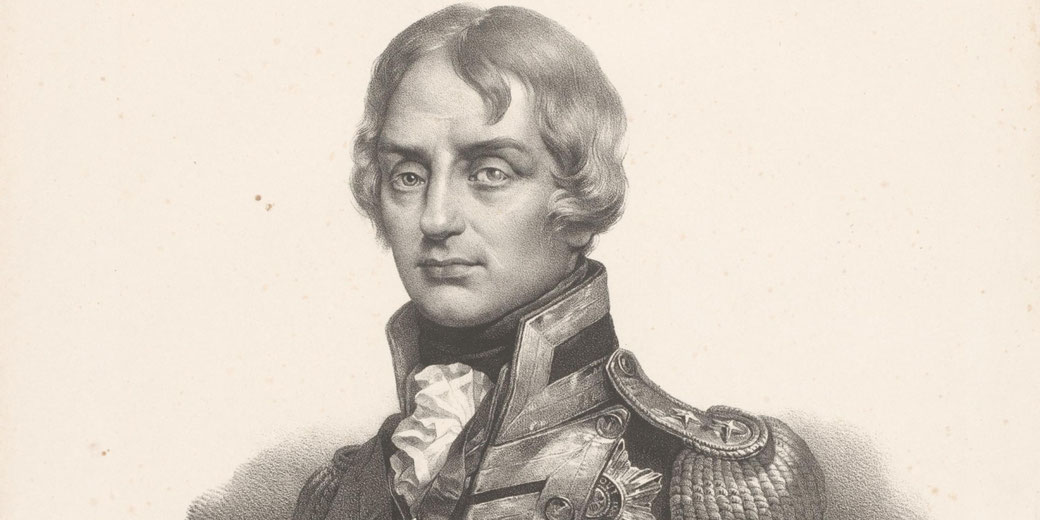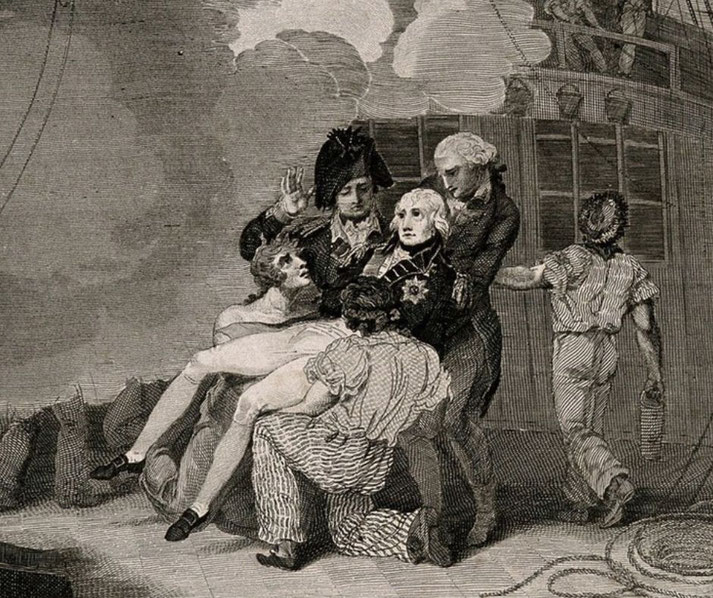Was Horatio Nelson really the greatest British naval commander or is it a convenient myth?

Naval warfare during the age of sail demanded both strategic genius and an ability to command men under extreme conditions.
Horatio Nelson became the example of these qualities in British memory, celebrated as the hero who secured Britain’s control of the seas.
Yet, historical acclaim can too easily blur the line between fact and national myth-making.
Nelson’s early victories
Born on 29 September 1758 in Burnham Thorpe, Norfolk, Horatio centered the Royal Navy at the age of twelve and first served on HMS Raisonnable under his uncle Captain Maurice Suckling.
During his early years at sea, Nelson gained experience in the Caribbean, the Arctic, and the East Indies, which helped him developed a breadth of knowledge over navigation, seamanship, and the basics of naval warfare.
He fought in campaigns such as the capture of Corsica in 1794, where he lost sight in his right eye during the siege of Calvi.
By the outbreak of the French Revolutionary Wars in 1793, he had already established a reputation for courage and leadership, and his rise through the naval ranks occurred during a period when Britain faced immense challenges to its control of the seas from Revolutionary and later Napoleonic France.
At the height of his career, Nelson achieved fame through a series of incredible victories.
On 14 February 1797 at the Battle of Cape St Vincent, he made a controversial decision to break from the line of battle and personally led the boarding of the Spanish ships San Nicolas and San Josef, capturing both in close combat.
Later that year at Santa Cruz de Tenerife, he lost his right arm in a failed assault.
By 1 August 1798, he had secured a stunning victory at the Battle of the Nile, where 13 of the 17 French ships were captured or destroyed, and left Napoleon’s army stranded in Egypt.
In April 1801 he defeated the Danes at Copenhagen, where he famously ignored an order to disengage by putting a telescope to his blind eye.
Finally, on 21 October 1805, he won his most famous battle at Trafalgar, where he commanded 27 British ships against 33 Franco-Spanish vessels.
Each of these engagements destroyed or neutralised enemy fleets as effective fighting forces, which gave Britain command of the seas at key moments.
At Trafalgar, in particullar, Nelson’s tactics ensured a decisive British victory over the combined French and Spanish fleets.
Finally, he died from a musket shot aboard HMS Victory during that battle, and his final reported words were recorded as, “Thank God I have done my duty.”
His funeral in January 1806 at St Paul’s Cathedral attended by thousands, and his coffin, made from the mast of the French ship L’Orient, were meant to remind everyone of hismany victories.
By this point, he had cemented his reputation as a national hero.
How Nelson’s reputation was construction
In the months that followed Trafalgar, the popular view of Nelson as Britain’s greatest naval commander grew rapidly thanks to newspapers, political leaders, and the Royal Navy promoting his image as a fearless leader who personified British naval strength.
Over time, monuments, biographies, and artistic depictions reinforced his fame.
Ultimately, Nelson’s Column in Trafalgar Square, built between 1840 and 1843 to a height of 169 feet 3 inches, became the most famous of these tributes.
Many historians accept the fact that Nelson possessed genuine brilliance as a naval commander, since he understood the value of aggressive tactics during a period when many admirals followed rigid line‑of‑battle doctrines.
Often he encouraged his captains to exercise initiative in combat, and his personal example inspired men to fight with single-minded determination.
Accounts from sailors and officers describe his concern for the welfare of his crews, and this attention to their needs encouraged loyalty.

Comparison with other admirals reveals sources of fame
However, the idea that Nelson was uniquely successful requires much closer examination.
Several other British admirals achieved victories of comparable or greater strategic importance.
For example, Admiral George Anson circumnavigated the globe between 1740 and 1744 and captured a Spanish treasure galleon, which weakened Spanish influence in the Pacific.
Likewise, Admiral Edward Hawke defeated the French fleet at Quiberon Bay on 20 November 1759, ensuring British control of the Atlantic during the Seven Years’ War.
Also, Admiral George Rodney won the Battle of the Saintes on 12 April 1782, to prevent a French invasion of Jamaica, while Admiral Adam Duncan crushed the Dutch fleet at Camperdown on 11 October 1797.
In each case, their achievements strengthened British naval power, yet none of these men achieved the same legendary status.
Several factors explain why Nelson’s career produced such lasting fame. As Britain faced an severe threat from Napoleonic France, and Trafalgar occurred at a decisive moment when fears of invasion ran high, Nelson’s death at the height of victory was easy to represent as a heroic sacrifice.
In addition, his letters, his well‑known relationship with Emma Hamilton, and his open displays of emotion made him a figure who felt relatable to the public.
As a result, political leaders and writers felt that they could easily use his image to inspire patriotism and morale during a period when Britain needed national unity.
Nelson's tactical innovations
Nelson’s tactics at Trafalgar, though highly effective, were not unprecedented.
Breaking the enemy line had precedent in earlier naval battles, and Admiral Rodney’s victory at the Saintes used a similar tactic more than twenty years earlier.
Nelson’s captains, known as the “Band of Brothers,” possessed significant experience and contributed a lot to his victories as well.
For example, Thomas Hardy, Cuthbert Collingwood, Thomas Fremantle, and Henry Blackwood all executed his orders faithfully, yet they received far less recognition.
In reality, Nelson relied on a well‑trained and disciplined Royal Navy that benefited from Britain’s industrial resources and rigorous naval administration that supported superior gunnery, factors that ensured the navy’s success regardless of one commander.
For decades after Trafalgar, Britain cultivated Nelson’s image as the nation’s greatest admiral for political purposes.
During the nineteenth century, Britain built an empire that depended on naval control, and celebrating Nelson provided a patriotic symbol of Britain’s future at sea.
In schools, textbooks praised his victories as heroic feats. In public spaces, monuments only magnified his reputation.
Even in the twentieth century, popular history and culture preferred individual heroes to more detailed accounts of collective effort, which ensured that Nelson’s myth endured.
Modern scholarly assessment
Modern scholarship presents a more balanced assessment. Nelson undeniably possessed remarkable leadership qualities and achieved victories that influenced the course of European history.
At the same time, naval warfare relied on more than the actions of one man. The Royal Navy developed efficient supply systems and rigorous training that produced advanced gunnery that allowed its fleets to dominate at sea.
The process of creating the myth increased his reputation and turned him into a national symbol whose image rallied support for Britain’s naval power and imperial ambitions.

In evaluating whether Nelson truly was Britain’s greatest naval commander, historians must separate his genuine abilities from the myth constructed around him.
His victories at the Nile, Copenhagen, and Trafalgar demonstrate exceptional skill and courage.
However, other admirals achieved results of similar significance, yet they never achieved comparable fame.
Over more than two centuries, the convenient myth of Nelson as the ultimate naval hero, yet the reality shows a more complicated picture of shared effort and institutional strength that supported Britain’s command of the seas.
What do you need help with?
Download ready-to-use digital learning resources
Copyright © History Skills 2014-2025.
Contact via email
With the exception of links to external sites, some historical sources and extracts from specific publications, all content on this website is copyrighted by History Skills. This content may not be copied, republished or redistributed without written permission from the website creator. Please use the Contact page to obtain relevant permission.





